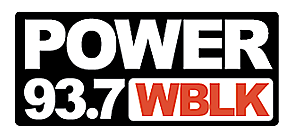
Money Minute: How to Avoid the High Cost of Divorce
Getting divorced? Yasmin Young talks with Kawanza Humphrey, VP of KeyBank, talk about ways avoid the high cost of divorce!!
How to Avoid the High Cost of Divorce
How to Avoid the High Cost of Divorce
• Whether you've been married for many years or just a few, the decision to divorce is never easy. Not only is there emotional pain, but a divorce can be strenuous on your finances as well. If you and your soon-to-be-ex-spouse agree to the divorce and want an amicable dissolution, there are ways to sidestep the courtroom and lower the financial and emotional cost of divorce.• Avoid Litigation
o In litigated or contested divorces, where details are hashed out in court for a judge to decide, the average divorce can cost between $15,000 and $30,000. In a collaborative divorce, the couple signs a participation agreement stating they will not go to court. Instead, they will work with a team of attorneys for each spouse to resolve their issues. A collaborative divorce could cut your costs anywhere from 20 percent to 40 percent, according to Money Crashers.o If you know you'll have difficulty agreeing on a division of property, child custody, etc., consider hiring an independent, third-party mediator who will work with both of you to come to a divorce settlement agreement. You can expect to pay between $3,000 and $7,000 for a mediated divorce. Arbitration is another option to avoid the cost of going to court. A third-party arbitrator makes binding decisions about issues in your divorce that you and your spouse must adhere to. Expect to pay between $3,000 and $4,000 per day for arbitration.
• Do Your Homework
o Divorce proceedings are regulated by state laws. DivorceSupport.com offers links to each state's requirements including residency rules, grounds for divorce, the division of property, child custody, support and visitation, and spousal support or alimony.o Even in an amicable divorce, divorce attorneys provide expert insight on situations you may overlook, and work to ensure your financial future remains secure. The American Academy of Matrimonial Lawyers has tips on selecting a divorce lawyer which includes questions you should ask and a free online client handbook on divorce.
o To save on legal costs, hire a lawyer who charges a flat fee for your divorce case. That way you won't have to watch the clock and billable hours every time you call or meet to discuss your case. If your lawyer charges hourly, ask for frequent updates on the costs you have incurred.
• Do-it-Yourself
o Legal fees are the biggest cost in any divorce. Like other legal documents, you can also file your own divorce papers. You don't technically need a lawyer. DIY works only in uncontested, no-fault agreements — meaning both parties agree on all matters including the decision to divorce, property division, child custody, etc. You can download the necessary forms from your state or county court websites for free.o If you're not sure which forms to download, you can go the online divorce route. Online divorce programs, ranging from $49 to $949, ask a series of questions to walk you through all of the paperwork applicable to your divorce. You'll enter your information online and then print and sign the forms. Some programs even provide professional assistance from divorce attorneys, financial advisors, and co-parenting experts at an additional cost. Compare Legal Forms reviewed the best online divorce forms. Regardless of which online program you choose, you'll still need to file your divorce papers with your local court and pay filing fees — $150 to $300 on average.
• Arriving at the divorce table with mutual respect and agreement helps start the next chapter of your life on a secure emotional and financial footing.
Additional online resources from KeyBank:
(This material is presented for informational purposes only and should not be construed as individual tax or financial advice. Please consult with legal, tax and/or financial advisors. KeyBank does not provide legal advice. KeyCorp 2017. KeyBank member FDIC.)
Are You Paying too much for Your Student Loans
Refinance Student Loans: What You Need to Know
• You're paying off your student loans — but are you paying more than you have to? If you're paying the same interest rate (or higher) than when you took out the loan, refinancing could help you save money on interest payments.• When you refinance student loans, you're generally taking out a loan with a different interest rate and payment terms from your previous loans. The creditor of this loan pays off your previous loan, and you proceed to make payments to the new creditor until your debt is paid off.
• Why Refinance?
o The main reason to refinance is to get a better interest rate. With a lower rate, you can use the money you would have paid in interest to pay off your principal more quickly. Or, depending on the loan terms, you might take the same length of time to pay off the loan but pay a smaller amount each month, freeing up some room in your budget.o Likewise, if you currently have a variable APR and you're worried about your rate going up in the future, refinancing to a fixed-rate loan would prevent eventual rate increases. This can make it easier to plan your budget and to predict when you'll finish paying off the loan.
• Is Refinancing Right for You?
o To start with, it may not be a viable option for you if your credit score isn't high enough to qualify for a better rate. Or, if you have federal student loans, refinancing to a private lender would mean that you no longer qualify for the federal income-based repayment program — or for other federal loan forbearance or forgiveness programs. So people who expect that they'll need help from one of those programs would be better off keeping their federal loans.o However, refinancing can be a great option for anyone who is on track to pay off their federal loans and aren't likely to qualify for federal loan forgiveness. Those who have private loans often benefit from lower rates or other favorable terms when they refinance student loans. If you took out loans while in school, you may not have established a solid credit history and there's a good chance that you're paying higher rates than you could be with your current credit history. Refinancing allows you to take advantage of your improved credit score and higher income to get a new loan that's less expensive.
o Refinancing your student loans doesn't have to be an all-or-nothing deal. Even if some of your loans aren't good candidates, you may have other loans that could be refinanced for better rates. Don't rule it out until you've considered each loan by itself.• When to Refinance
o The better your credit score, the better the rate you'll qualify for. Therefore, if you're currently working to raise your credit score, you may want to wait until your score goes up before you refinance.o If your score already qualifies you for a lower rate, it might be the perfect time to refinance so you can save on interest. This is especially true if you're thinking about a fixed-rate loan and you expect rates to rise; in that case, you should refinance before rates go up. It's not easy to predict economic trends, so it's a good idea to talk to a financial adviser about how rates are likely to change and when you should refinance.
o Before taking out a new loan, consider the terms including the APR, monthly payment, whether the rate is fixed or not and whether it offers protection in case of unemployment. Once you look at all of the variables, you may find that refinancing reduces the amount you owe in interest and allows you to pay off those loans sooner.
Additional online resources from KeyBank:
(This material is presented for informational purposes only and should not be construed as individual tax or financial advice. Please consult with legal, tax and/or financial advisors. KeyBank does not provide legal advice. KeyCorp 2017. KeyBank member FDIC.)
Teaching Kids to Save Money
Strategies to Help Your Children Manage Money
• The first step for kids learning how to manage their money is to let it accumulate so that they actually have something to manage.• If your child is just starting to save all of the money they receive, then you may want to begin with a piggy bank at home. Clear piggy banks allow kids to watch the money grow, and understand the concept of how not spending today means they will have more tomorrow.
• What should you do if your child already has a piggy bank? How do you know if they're ready to transition from a piggy bank to an actual savings account? Here are a few signs:
o Their piggy bank is full and there's nowhere else for the money to go.
o They have a savings goal that will take them longer than a few weeks to save up for.
o You've explained the concept of interest and they're interested in the idea that their money could earn them more money.• Now that you have a savings space set up for your child's money to accumulate, it's time to set up some strategy.
o Sit down with your child and decide together what portion of money should be saved. Share your own rule for this, and if you don't have one, now is a great time to make one.
o This strategy has a compounding effect because by creating this savings habit now, the amount of money they'll save will only grow as their allowance eventually becomes paychecks.• Reinforce the Concept of Saving With Apps: Money saving apps that use gaming platforms to teach children are very powerful. Not only do your kids have fun, but they learn critical thinking skills, use their creativity and grow their capacity for "three-dimensional thinking."
• Check out these money saving apps to educate and reinforce savings behavior in your child:
o Unleash the Loot! (Free, Ages 5-8): Your child gets to help save endangered animals by earning and saving up money to rescue and take care of them.
o Money Metropolis (Free, Ages 7-12): Your child gets to choose from one of three saving goals. They can then direct their avatar through the world of Money Metropolis earning money, spending it and hopefully saving up for their goal — which is the whole point of the game.
o Savings Spree ($5.99, Ages 7+): Kids can start learning how daily habits can add up to more savings to be used toward actual savings goals or what happens when they spend all of their money away.
o Remember that in order for kids to have money to manage at all, they have to save it as soon as they receive it. Work through the strategies above, and this time next year your child will be ready to move onto more advanced stages of learning about money management.Additional online resources from KeyBank:
(This material is presented for informational purposes only and should not be construed as individual tax or financial advice. Please consult with legal, tax and/or financial advisors. KeyBank does not provide legal advice. KeyCorp 2017. KeyBank member FDIC.)
Tips for Saving Your Money if you get a Raise
Change in Salary: Pay Increase
• A change in salary can have a major impact on your current lifestyle as well as your future. This financial transition will impact multiple areas of your life. Where should you focus your financial attention when you have a change in salary?• Once you come back down to earth after looking at the extra digits in your new salary, it's time to take a realistic look at practices that can benefit from your pay bump. Here's a list of to-dos to help guide you through your pay increase with a requisite increase in financial savvy.
o Retirement Savings: Make sure you're maxing out your investment in both your employer and personal retirement plans. Increasing your contribution to your employer plan might mean more "free money" via your employer match to your retirement plan.
o Paying Off Debt: While your first inclination might be to slay your debt with your pay bump, make sure that you're still saving in a rainy day account so that you're not short on funds if there's an emergency. Accelerating your debt payoff can save you major dollars in interest payments, which is money better spent elsewhere.
o Think About Tax Time: That pay bump will likely give you a tax bump — as in you'll be paying more. Don't forget to adjust your tax withholding with your human resources department. If you're a freelancer and you land a choice account, be sure to stash a little extra for tax time.
Additional online resources from KeyBank:
(This material is presented for informational purposes only and should not be construed as individual tax or financial advice. Please consult with legal, tax and/or financial advisors. KeyBank does not provide legal advice. KeyCorp 2017. KeyBank member FDIC.)
Tips for Filing your Taxes
Deciding How to File Your Taxes
Online DIY Preparation
• Nearly 53 million Americans self-prepared and filed their tax returns online in 2016, according to the Internal Revenue Service (IRS).• Pros:
o Easy to Use: Tax software programs walk you through the process by asking you questions to determine your tax refund (or payment) based on the answers you input. Which program makes sense for you? The Balance has rated the 7 Best Tax Software Programs to Use in 2017.
o You Set the Pace: You can take your time and prepare your taxes at home. If you forget something, you can simply log back on. You don't have to drive back to your tax accountant's office.
o It's Inexpensive: Depending on which tax software you decide to go with, the price can range from free to $70.• Cons:
o You're Not a Tax Professional: Tax programs rely on you knowing which receipts to gather and it's possible you might enter information incorrectly or miss out on qualified deductions and credits.
o No advice: Tax software can't advise you on how to maximize your tax return for the following year.• Questions to Ask:
o How comfortable am I with using tax software?
o If I decide to do them myself, will I get them done on time, or will I miss the deadline and risk a penalty?
o Hiring a Tax Professional
o About 60 percent of taxpayers use the services of tax professionals to prepare their returns, according to the IRS.• Pros:
o Guidance: A tax professional will review all of your financial documents and ask for any relevant data, forms and receipts to help maximize your return.
o Representation: Licensed tax professionals can represent you before the IRS.
o They're Trained: Tax professionals know the ins and outs of the tax code. They can help you maximize your refund by noticing deductions you may have missed on tax software programs.
o Tax Deduction: For your tax return, you can still deduct the cost of hiring a tax professional to prepare your taxes.• Cons
o Cost: Hiring a professional costs at least three times more than the most expensive tax software program — $273 on average for a 1040 with Schedule A and State Return, according to the National Society of Accountants (NSA).
o Time: At a minimum, you'll meet with a tax professional twice — once to submit all of your tax documents and financial information, and a second time to review and sign the tax return when they are done.
o The Potential for Fraud: Most tax professionals provide honest service. However, each year return preparer fraud is on the IRS' "Dirty Dozen" List of Tax Scams. To avoid being scammed, follow the IRS' tips in Things to Remember When Choosing a Tax Preparer.• Questions to Ask:
o The NSA offers a comprehensive list of questions to ask a prospective tax preparer.
o It is important to note that any tax professional who files more than 11 tax returns in one year must e-file all tax client tax returns. So, whether you prepare your taxes online yourself or have a professional do them, your tax return will most likely be e-filed. And that's a good thing! According to the IRS, when you e-file, you can expect to receive a refund within three weeks — or faster if you elect direct deposit into your checking or savings account — versus six to eight weeks to process a paper form of your tax return.
o Regardless of who prepares your tax return, you are legally responsible for the information on your return. So make sure it's done right the first time.
Disclosures
This information and recommendations contained herein is compiled from sources deemed reliable, but is not represented to be accurate or complete. In providing this information, neither KeyBank, nor its affiliates are acting as your agent or is offering any tax, accounting, or legal advice.Additional online resources from KeyBank:
(This material is presented for informational purposes only and should not be construed as individual tax or financial advice. Please consult with legal, tax and/or financial advisors. KeyBank does not provide legal advice. KeyCorp 2017. KeyBank member FDIC.)
How to Manage Your Retirement when You Switch Jobs
What to Do With Retirement Account When You Switch Jobs
• Did you know that you can expect to change jobs four times by the time you reach 32? That’s what career networking site LinkedIn found when it surveyed its users. And if you’re already in your 30s, you likely changed jobs at least twice in your first 10 years out of college.
• With all these new jobs, you’ve probably found yourself wondering: “Should I roll over my 401(k)?” Here are some ideas about what you might want to do with the funds in your old company’s retirement plan.• Understand What You Can Do With Your Old 401(k)
• First, take a step back and review your options. There are four things you can do with your 401(k) through a previous employer:
o Leave the money where it is
o Roll over your old 401(k) into your new employer’s plan
o Roll over your 401(k) into an individual retirement account (IRA)
o Cash out• There’s a chance that option one isn’t on the table. Typically, you must have a balance of more than $5,000 to leave money in your old plan. And if you leave 401(k) funds with your old employer, it might be easy to lose track since you can’t actively use or contribute to the account.
• Cashing out your 401(k) is not the right move for most people, either. For one, cashing out triggers a big tax penalty you’ll have to pay the next time you file your taxes. It also means dismantling part of your all-important nest egg.
• So the best option is usually to roll over your 401(k). The harder question to answer is whether you should roll over your 401(k) into your new employer’s plan or into an IRA.
• Should I Roll Over My 401(k) to My New Employer?
o First, verify that your new employer has a 401(k) plan. Certain employers may not offer a retirement plan at all or they may offer a 401(k) alternative plan, such as a 403(b) or SIMPLE IRA. Also, know if your employer offers contribution matching.
o If you think it’s important to keep your financial situation simple, rolling over your old 401(k) into your new employer’s plan might be a smart move. By doing so, you consolidate your accounts and keep your retirement money in one place.
o While this is a good option for many people, there are still some downsides. You may not like the fund selection in your new employer’s plan, for example, or the fees might be too high. You’ll also miss out on some of the hidden perks of IRAs. For example, in certain circumstances, Roth IRA funds can be used to help you purchase a house. Whenever you make a major financial move, it’s worth it to fully investigate all options and potential complications.• Should I Roll Over My 401(k) to an IRA?
o This option provides you with more choice in how you use your retirement money, as you can choose to open an IRA with any financial institution and invest your money as you wish. It also means that you can name someone other than your spouse as the account’s beneficiary, whereas, by law, 401(k) beneficiaries must be spouses, if applicable — or your spouse needs to sign a waiver before you can name someone else as the account’s beneficiary. This option can also mean dealing with a lot more responsibility, though, since it’s completely up to you to invest and manage your nest egg when you go this route.
o Read up on the differences between a traditional IRA and a Roth IRA. You may be able to choose whichever one you prefer when you initiate your rollover. If you convert your 401(k) funds to a Roth IRA, you will have to pay taxes on the converted amount. Depending on how much money you have in your 401(k), you could end up with a hefty tax bill.• Getting Started
o The easiest way to initiate a rollover into a new 401(k) is to work through the process with your new employer. Or, if you choose to roll over to an IRA, you can initiate that process with your financial institution. These are known as direct transfers. The companies involved can handle the rollover for you, which means you won’t need to deal with the funds yourself. Many times, this is a safer, more convenient option that requires little action on your part. On the other hand, with an indirect transfer, you get a check and then have to invest it within a certain timeframe. If you mishandle this or wait too long, you could accidentally trigger a tax penalty. So generally, it’s best to go with a direct transfer.• Whatever you choose, be sure to keep your financial future in mind and meet with your financial advisor to see how this works into your overall retirement strategy. It’s important to make the most of the good savings work you’ve done already.
Additional online resources from KeyBank:
(This material is presented for informational purposes only and should not be construed as individual tax or financial advice. Please consult with legal, tax and/or financial advisors. KeyBank does not provide legal advice. KeyCorp 2017. KeyBank member FDIC.)
Save Money with Fee-Free Checking
KeyBank Hassle-Free Account
- The KeyBank Hassle-Free Account was designed to put you in control of your finances. It's a free checkless account that provides you immediate and convenient access to your money – without the hassle of writing checks.
KeyBank Hassle-Free Account Details
- No Monthly Maintenance Service Charge and no minimum balances
- No overdraft fees. No bounced checks – there are no paper checks on this account
- Provides unlimited access to free digital banking including online and
- mobile banking and bill payment.
- Free monthly statements (paper or online)
- Once enrolled, our enhanced KeyBank Relationship Rewards® program allows you to earn rewards just by actively using your Hassle-Free Account, debit card or by expanding your banking relationship with Key.
Additional online resources from KeyBank:
(This material is presented for informational purposes only and should not be construed as individual tax or financial advice. Please consult with legal, tax and/or financial advisors. KeyBank does not provide legal advice. KeyCorp 2017. KeyBank member FDIC.)
How to use Your Extra Money from Tax Reform
Tax Impact – Take Home Pay
• Starting in February, approximately 90 percent of US workers will see a slight increase in their take home pay, courtesy tax reform that reduces personal tax rates as much as 3 percent. (Source: US Treasury)
• Granted, those new tax rates won’t result in significantly larger paychecks. But at KeyBank, we believe small steps can pave the way to turning big dreams into reality.
• KeyBank recommends the following steps that can help you make the most of extra income coming your way due to tax reform:
o Emergency savings falling short? You’re not alone. According to Bankrate.com’s most recent Financial Security Index Survey, only 39 percent of Americans would have enough emergency savings to cover an unexpected $1,000 expense. We recommend emergency savings of at least three months take home pay.
o Use direct deposit to automatically allocate your increased income to build emergency savings. And talk to your banker about savings account options to be sure you are making the most of your savings opportunities.
o Keep on spending less than you earn. In other words, don’t use that extra income as a reason to spend more.
o On target to max out your 401K? Great news! Talk to your banker about establishing an IRA or other additional retirement account. Again, your increased income might not mean thousands more dollars, but small, regular contributions will add up
o Roll that extra income into your regular payment on high-interest credit cards. In addition to paying down a balance and saving on current interest, you can head off the impact of interest rate increases that might happen later this year.Additional online resources from KeyBank:
(This material is presented for informational purposes only and should not be construed as individual tax or financial advice. Please consult with legal, tax and/or financial advisors. KeyBank does not provide legal advice. KeyCorp 2017. KeyBank member FDIC.)
Carrying Bigger Bills to Save Money
Why Carrying Bigger Bills Will Help You Save
• The temptation to spend your hard-earned cash is everywhere, from clearance sales and alerts for megadeals in your inbox to promotions at the trendiest restaurants in town. So how can you stick to your budget?• It turns out that carrying around bills in large denominations can help you spend less.
• A study in the Journal of Consumer Research revealed that the size of your bills influences how inclined you are to spend them. The smaller the denomination, the more likely you'll be to spend the bill. For instance, you're more likely to spend 20 $1 bills than break a single $20 bill.
• Why is that? Well, it could be that we tend to view larger bills as more valuable and thus are more careful with how we spend them. Conversely, we think of smaller bills as less valuable and part with them more freely. It's far easier to part with a $5 dollar bill than with a $20.
• The same goes when you're making a purchase. You're more likely to buy 10 items that each cost $1 than a single item that costs $10, even though you end up spending the same amount of money. And that's why it's so easy to shell out far more money than you wanted to when buying lower-cost items, a phenomenon called nickel-and-diming.
• This happens partly because of mental accounting, where we irrationally separate our money based on criteria such as where it came from and how we plan on using it. So while larger bills may be designated for special purchases, the same amount in smaller bills may be easily spent on frivolous things.
(This material is presented for informational purposes only and should not be construed as individual tax or financial advice. Please consult with legal, tax and/or financial advisors. KeyBank does not provide legal advice. KeyCorp 2017. KeyBank member FDIC.)
Tips to Save Money On Grocery Shopping
Grocery Shopping on a Budget
• No matter what's on your list, grocery shopping on a budget is hard to do. But with a little planning ahead and creative thinking, you can stretch your food budget farther than you ever imagined. Here are ideas to get you started.• Let's start from the start: Going grocery shopping on a budget means creating a budget in the first place. To know how much you should spend on groceries, note your monthly income on a spreadsheet and subtract recurring expenses. Save receipts over time and note how much you're spending. Decide on a reasonable percentage for groceries and stick to it.
• Make Food Last Longer
o CNBC reports that the average American family throws away around $2,000 worth of food each year. Make your groceries last longer so you don't have to throw away spoiled food. Separate produce and meat in your fridge so they don't spread bacteria to each other. Poking holes in plastic bags will air out fruit and vegetables and make them last longer. And wrapping greens like lettuce in foil before refrigerating keeps them fresh longer, according to Self.• Bulk Up on Staples
o Stock up on large packages of nonperishables, and buy in quantity when you spot a sale. Rice, pasta, oats and lentils won't go bad on you, and neither will canned tuna and beans. You can use these staples in many cost-saving recipes. Some grocery stores also allow you to buy ahead on baked goods. If you're planning a large gathering, ask your store's bakery if you can purchase that big cake or platter when it's on sale. Then bring in your receipt as much as a month later to pick it up for your big event.• Befriend the Butcher
o There's no way around it - meat is one of the most expensive items in the store. To save, buy one large roast instead of shopping for various cuts of meat. Ask the butcher to remove the bone, which you can use for soup stock, then grind part of the meat for hamburgers and cut the rest for a pot roast. Or, consider pork - it's less expensive, especially if you buy a butt or shoulder, which you can easily shred to make pulled pork. While you're talking to the butcher, ask about getting a bag of chicken backs, necks and feet. Some butchers will just give it away and others may charge a small amount. Use these ingredients to make a rich stock for soups and stews.• Buy Your Own Cow
o Got a big freezer? Some local farms and ranches might be able to help you with something that will probably go beyond your local butcher's scope. They may sell you a whole grass-fed cow - or one-half or one-quarter of one cow for much less than you'd pay at a grocery store. If that's too much meat for you, consider splitting the cow with friends or relatives.Additional online resources from KeyBank:
(This material is presented for informational purposes only and should not be construed as individual tax or financial advice. Please consult with legal, tax and/or financial advisors. KeyBank does not provide legal advice. KeyCorp 2017. KeyBank member FDIC.)
More From 93.7 WBLK









